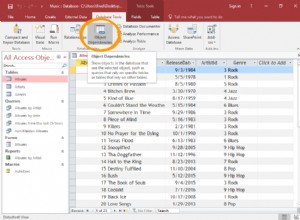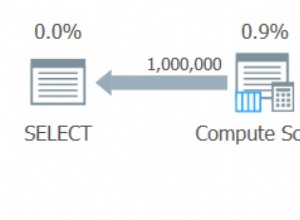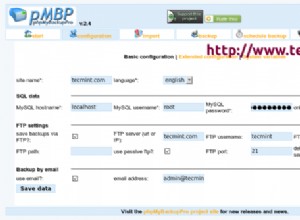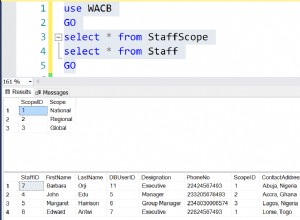A meno che tu non abbia una buona ragione per modificare direttamente il registro, ti suggerisco di considerare l'utilizzo di WMI . WMI ti fornirà un'implementazione più indipendente dalla versione. È possibile accedere a WMI tramite System.Management
spazio dei nomi. Potresti avere un codice simile a questo.
public void EnableSqlServerTcp(string serverName, string instanceName)
{
ManagementScope scope =
new ManagementScope(@"\\" + serverName +
@"\root\Microsoft\SqlServer\ComputerManagement");
ManagementClass sqlService =
new ManagementClass(scope,
new ManagementPath("SqlService"), null);
ManagementClass serverProtocol =
new ManagementClass(scope,
new ManagementPath("ServerNetworkProtocol"), null);
sqlService.Get();
serverProtocol.Get();
foreach (ManagementObject prot in serverProtocol.GetInstances())
{
prot.Get();
if ((string)prot.GetPropertyValue("ProtocolName") == "Tcp" &&
(string)prot.GetPropertyValue("InstanceName") == instanceName)
{
prot.InvokeMethod("SetEnable", null);
}
}
uint sqlServerService = 1;
uint sqlServiceStopped = 1;
foreach (ManagementObject instance in sqlService.GetInstances())
{
if ((uint)instance.GetPropertyValue("SqlServiceType") == sqlServerService &&
(string)instance.GetPropertyValue("ServiceName") == instanceName)
{
instance.Get();
if ((uint)instance.GetPropertyValue("State") != sqlServiceStopped)
{
instance.InvokeMethod("StopService", null);
}
instance.InvokeMethod("StartService", null);
}
}
}
Questo codice presuppone un riferimento al progetto a System.Management.dll e la seguente istruzione using:
using System.Management;
I Protocolli SQL blog contiene un articolo questo va in qualche dettaglio su cosa sta facendo il codice sopra.
Nota:se un firewall blocca le porte, non sarai comunque in grado di accedere al server tramite TCP.




